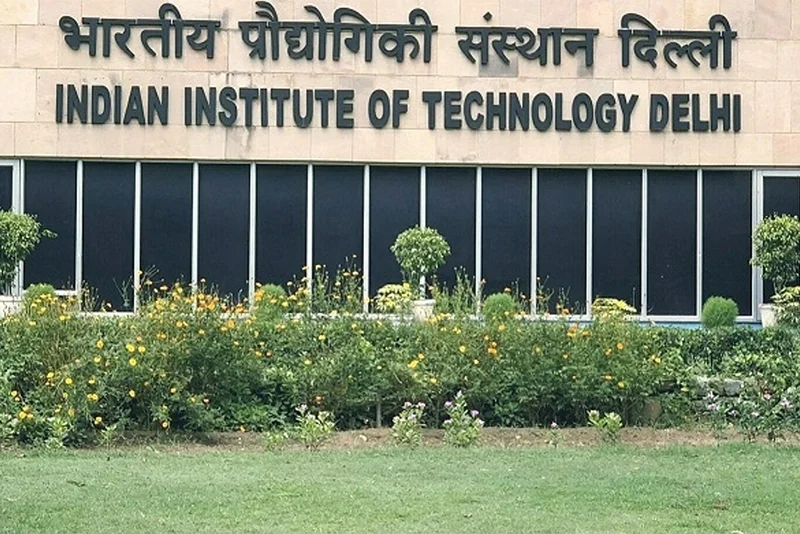- Courses
- GS Full Course 1 Year
- GS Full Course 2 Year
- GS Full Course 3 Year
- GS Full Course Till Selection
- Answer Alpha: Mains 2025 Mentorship
- MEP (Mains Enrichment Programme) Data, Facts
- Essay Target – 150+ Marks
- Online Program
- GS Recorded Course
- Polity
- Geography
- Economy
- Ancient, Medieval and Art & Culture AMAC
- Modern India, Post Independence & World History
- Environment
- Governance
- Science & Technology
- International Relations and Internal Security
- Disaster Management
- Ethics
- NCERT Current Affairs
- Indian Society and Social Issue
- NCERT- Science and Technology
- NCERT - Geography
- NCERT - Ancient History
- NCERT- World History
- NCERT Modern History
- CSAT
- 5 LAYERED ARJUNA Mentorship
- Public Administration Optional
- ABOUT US
- OUR TOPPERS
- TEST SERIES
- FREE STUDY MATERIAL
- VIDEOS
- CONTACT US
Indian Universities are Doing Well in the QS Ranking List
Indian Universities are Doing Well in the QS Ranking List

Why in the News?
- For the first time, more than 50 Indian universities have been featured in the QS World University Rankings 2026.
- It was published by Quacquarelli Symonds (QS), a U.K.-based higher education analysis firm.
|
What is QS World University Rankings 2026?
|
What are the Key HIghlights?
- Top Performer: IIT Delhi is the highest-ranked Indian university at Rank 123.
- Other Top Institutions:
- IIT Bombay
- IIT Madras
- IIT Kharagpur
- IISc Bengaluru
- Rapid Growth:
- Number of Indian universities in the QS rankings has grown from 11 in 2015 to 54 in 2026.
- New Entrants (2026):
- Ashoka University (Haryana)
- Shiv Nadar Institute of Eminence (Greater Noida)
- Total of 8 new Indian universities entered the rankings this year.
Key Parameters of QS World University Rankings 2026
- Academic Reputation (30% weightage):
- This means how people around the world think about the quality of teaching and education in a university.
- Research Impact:
- Citations per research paper (20%): This means how often other researchers use or refer to the university’s research work in their own studies.
- International research network (5%): This shows how much the university works with researchers and universities in other countries.
- Diversity & Internationalisation: 10%
- This means how many teachers and students come from other countries. More international people in a university shows that it is welcoming and known around the world.
- Student Outcomes: This checks how well students do after finishing their studies. It includes:
- Employer reputation (15%): How much companies trust the university and want to hire its students.
- Student placements (5%): How many students get jobs after they graduate.
- Campus Sustainability: 5%
- This looks at how eco-friendly the university is. It checks if the campus takes care of the environment by saving energy, reducing waste, and using green practices.
- Learning Environment:
- This means how good the university is for studying and living. It includes things like clean classrooms, good libraries, safe hostels, and helpful teachers that make student life better.
Has Higher Education in India Improved?
- Rising Global Compatibility:
- Indian universities are increasingly aligning with global academic norms, making them more comparable to international universities.
- Student-Faculty Ratio:
- Average in Indian universities: 19:1
- Global standard: 10:1 to 15:1
- Ashoka University has achieved a ratio of 11.5:1 for 3,000 students.
- International Diversity:
- Still low in most Indian universities.
- Ashoka University attracts students from 20 countries.
- Most universities in India have very few students from other countries.
- Also, government universities usually cannot hire teachers from abroad. Because of this, they get low ranking in these parts of the world university rankings.
- Research Output:
- Traditionally, less emphasis on original research in universities.
- In STEM, research was mostly done in separate institutes, unlike the global model where universities are research hubs.
- This trend is now changing.
- New Research Focus:
- Institutions like IITs, IISERs, and new private universities are focusing more on faculty and student research.
- Role of NEP 2020:
- The National Education Policy 2020 promotes a research-based university system, boosting India’s global standing.
- Employment Outcomes:
- Earlier, public universities paid little attention to student placements.
- IITs/IIMs had strong placement cells.
- Now, even central universities are prioritising employability.
- QS Ranking Relevance:
- Improvements in research, faculty ratio, diversity, and placements directly help Indian institutions climb international rankings like QS.
What are the Significances?
- Improved Global Recognition:
- Indian universities gaining spots in global rankings improves their international image and credibility.
- Increased Student Confidence:
- High rankings boost student trust in Indian institutions, encouraging more to pursue higher education within the country.
- Attraction of Global Talent:
- Recognition helps Indian universities attract international students and faculty, increasing diversity.
- Better Research Environment:
- Focus on impactful research and global collaboration encourages a stronger academic and innovation ecosystem.
- Policy Impact and NEP 2020:
- Reflects positive outcomes of National Education Policy (NEP) 2020, especially its emphasis on research and quality education.
- Enhanced Employment Opportunities:
- Better rankings can help universities build stronger industry linkages, improving placements and student outcomes.
- Boost to Private Universities:
- The entry of private institutions like Ashoka and Shiv Nadar University shows that quality is improving beyond just public institutions.
- Encouragement for Reforms
- Rankings push universities and policymakers to invest in faculty, research, sustainability, and global engagement.
What are the Challenges and Way Forward?
|
Challenges |
Way Forward |
|
1. Low international faculty and student presence |
Create flexible visa and recruitment policies to attract foreign students and faculty |
|
2. Low student-faculty ratio |
Recruit more qualified faculty to bring ratio closer to global standards (10–15:1) |
|
3. Weak global research output and citations |
Invest in research infrastructure, encourage collaborative international publications |
|
4. Limited focus on campus sustainability |
Implement green practices, improve energy efficiency, and promote eco-friendly infrastructure |
|
5. Poor industry-academia linkage in many universities |
Strengthen industry partnerships, boost internships and placement support systems |
|
6. Limited global academic collaborations |
Facilitate joint degree programs, faculty exchanges, and global research networks |
|
7. Lack of focus on student outcomes and employability |
Establish robust career services, monitor graduate employability, and align courses with jobs |
|
8. Resistance to reform in traditional institutions |
Promote institutional autonomy, encourage outcome-based education reforms |
Conclusion
The increasing presence of Indian universities in global rankings reflects a positive shift in the country's higher education landscape. This momentum can be sustained by focusing on innovation, inclusivity, and international engagement. A future-oriented education system that nurtures global collaboration, environmental responsibility, and employability will not only elevate India's global academic standing but also contribute meaningfully to national development goals.
|
Ensure IAS Mains Question Q1. The increasing number of Indian institutions in the QS World University Rankings reflects a shift in India's higher education policy landscape. Critically examine the role of the National Education Policy 2020 in shaping this change. (250 words) |
Ensure IAS Prelim MCQ:Q. Consider the following statements with respect to the QS World University Rankings 2026
How many of the above statements is/are correct?
Answer: b Statement 1 is incorrect. Quacquarelli Symonds (QS) is a U.K.-based, not U.S.-based, higher education analytics firm. Statement 2 is correct. IIT Delhi is the highest-ranked Indian university at 123rd globally. Statement 3 is correct. The rankings use eight key indicators, including academic reputation (30%), employer reputation (15%), faculty/student ratio (10%), citations per faculty (20%), international faculty ratio (5%), international student ratio (5%), international research network (5%), and employment outcomes (5%). |
|
Also Read |
|
UPSC Foundation Course |
|
| UPSC Monthly Magazine | CSAT Foundation Course |




